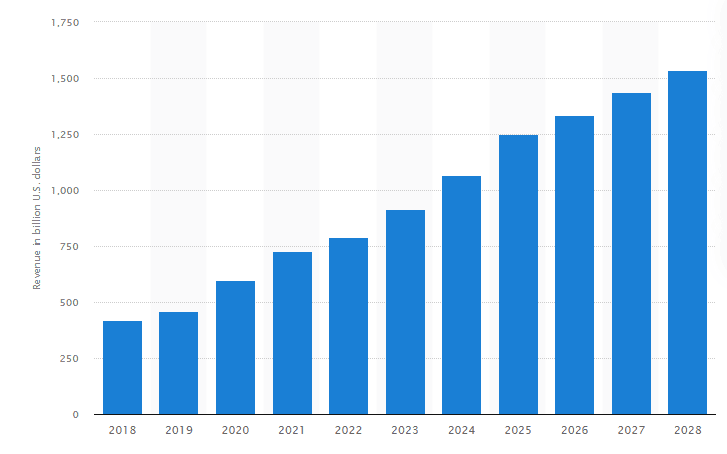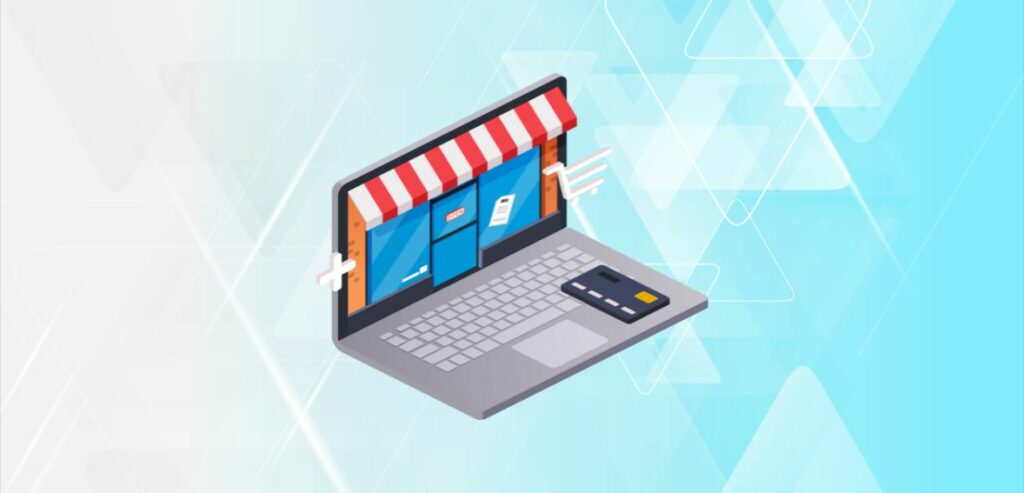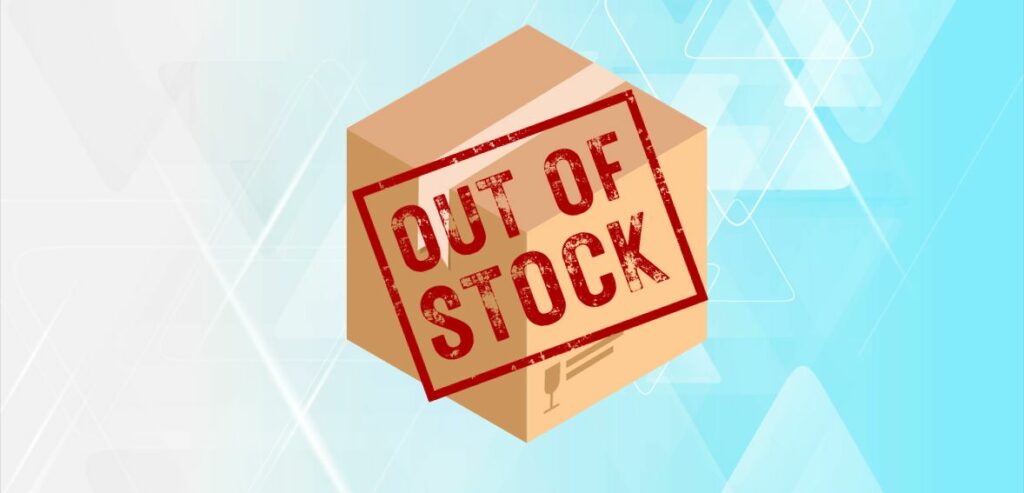As we approach the holiday season, it also means the peak of the shopping frenzy, it’s no surprise that both excitement and stress are felt by retailers during this period. With the competitive marketplace of eCommerce stores, it becomes crucial to prioritize a secure, convenient, and seamless shopping experience. Whether your sales predominantly happen online or involve a combination of in-store and online transactions, getting all the elements right is most important to stand out from the competition and retain customers. Any disruptions experienced by customers on your eCommerce platform during this period could drive them towards other options (as they are just a click away).
The great news is that through preparations and leveraging tools, eCommerce companies can not only overcome challenges but also elevate customer satisfaction during the holiday sales rush. This article will share tips to optimize eCommerce business and help you gear up for the holiday season while ensuring a worry-free and exceptional experience for their valued customers.

Source: Statista – Revenue of the e-commerce industry in the U.S. 2018-2028
Optimize eCommerce – Stay Ahead
Before we dive into the process of optimizing your eCommerce website, it’s important to understand what eCommerce optimization involves taking steps to improve your store’s sales to increase and expedite transactions.
If your website isn’t properly optimized or prepared, it can lead to problems that eventually result in a decline in revenue.
To ensure that your online store is visible on search engines and provides a good shopping experience for customers, ongoing optimization of your eCommerce website is crucial. However, optimizing your store becomes more significant before and during the busy holiday shopping season. Achieving results entails more than addressing technical aspects, and in the following sections, we’ll explore the various facets of e-commerce optimization.
Get Your eCommerce Store Ready
Before the busy holiday season arrives, it’s important to ensure that your online store is in good condition and ready to handle a surge of visitors. It can be quite discouraging to put effort into marketing to attract customers to your brand and then lose them because your store isn’t adequately prepared.

To avoid these issues go through the following checklist to ensure that every aspect of your store is working properly:
1. Give Your Online Store a Festive Makeover for the Holidays
Like traditional businesses spruce up their stores it’s important to customize your online store for the holiday season.
Start by infusing the holiday spirit into your website content. This includes adding holiday themes, colors, slogans, and images. If you’re unsure where to start or need some ideas, take inspiration from your competition or platforms like Pinterest can be a good source too.
It’s crucial to find a balance – don’t go overboard with the elements and theme, keep it minimalistic. It’s important for customers to recognize your brand still and have the user shopping experience they’re used to enjoying.
2. Create and Verify the Holiday Sales List
Keeping customers engaged on your website is important by offering them HIGH savings. Research shows that 81% of Americans prioritize finding deals and discounts throughout their shopping journey.
To ensure visibility, make sure your promotions are prominently displayed on each product. Avoid the risk of losing customers by ensuring that discounts are easily visible throughout the page. If your sales are hidden within product pages or only applied during checkout, shoppers who actively seek holiday deals might miss out because they can’t see the discounts at a glance.
Double-check that all sale prices are accurately shown on product pages and correctly reflected in the checkout totals. If you use discount or coupon codes, make sure they work seamlessly on your site and correspond with those used for affiliate promotions.
Lastly, don’t forget to verify the sale prices. Promoting discounts without reflecting them during the purchase process can lead to rates of abandoned shopping carts and potentially create customer service and public relations issues.
3. Reviewing the Working of the Site
When it comes to your holiday eCommerce strategy, there are certain aspects that require attention. Start by examining your main landing page, product pages, and add to cart and Buy now sections. Make sure that the layout is clear, consistent, and easy to navigate.
It’s crucial to review your checkout process as well. Remove any steps or complications that could hinder a seamless purchase experience. Additionally, you should offer multiple eCommerce payment options like Apple Pay, Google Pay, PayPal, and Stripe, among others. Streamline the process as much as possible to enable these choices more shopping-friendly experience.
4. Ensure Mobile-Friendliness Too
Nowadays, ensuring that your website is optimized for mobile users is crucial as recent surveys show that around 76% of people shop with a smartphone. With an increasing number of people turning to their smartphones for shopping, a failure to make your site mobile-friendly could result in a significant loss of business. The good news is that transforming your site into a mobile-friendly version is a relatively straightforward process. If your website is built on WordPress, there are plugins that can assist you. Alternatively, platforms like Shopify automatically optimize your site for mobile browsing.
Consider these simple adjustments to enhance the mobile-friendliness of your site:
- Responsive Theme: Opt for a responsive theme that adapts to various screen sizes, ensuring a seamless user experience on both desktops and mobile devices.
- User-Friendly Buttons: Implement large, easy-to-click buttons that enhance navigation and streamline the shopping process on mobile devices.
- Minimize Pop-Ups: Reduce or eliminate pop-ups, as they can be intrusive and affect the user experience on smaller screens.
5. Manage Inventory and Shipping
Before launching your holiday marketing campaigns, it’s crucial to confirm the availability of your inventory. Once you’ve identified the key products for your promotions, communicate this priority to your suppliers and warehouse staff to prevent stockouts during the bustling holiday season. Stockouts can spike, so proactive measures are essential to meet the surge in demand. Additionally, collaborate closely with your shipping providers to ensure they are well-prepared to handle the anticipated increase in orders.

Consider the following steps to enhance your holiday season preparedness:
- Keep your suppliers and warehouse staff informed about the products prioritized for marketing, reducing the likelihood of inventory shortages.
- Recognize the potential for a significant increase in sales, especially during the holiday rush, and take proactive steps to manage inventory accordingly.
- Verify the readiness of your shipping providers to handle the additional order volume. Confirm that they can efficiently manage the shipment surge to meet customer expectations.
- Assess the shipping options offered by your providers to ensure they match or exceed those of your competitors. Consider factors such as same-day delivery and international shipping to stay competitive in the market.
Creating An Effective Marketing Plan
It’s time to elevate your presence and distinguish yourself from competitors through precise, personalized, and pertinent marketing practices.
Here are some things to consider for impactful results for your store:
1. Learnings from the Past
To build anticipation for the upcoming holiday season, retailers should initiate an engaging campaign featuring exclusive products and enticing discounts. Utilize insights from the previous year’s performance data to refine your eCommerce platform. Implement an omnichannel approach to ensure a seamless blend between online and physical store promotions.
2. Focusing on Ad Campaigns
In the competitive landscape of holiday eCommerce, standing out is paramount. Tailor your advertising strategy to captivate your audience by addressing their specific needs. Construct ad copy that highlights how your product solves their challenges and resonates with their language.
Conduct A/B testing to fine-tune your approach, testing different elements like promotional offers or CTAs. Experiment with alternatives by offering freebies alongside traditional promotions like 25%, 50%, and 70% discounts. Employ additional techniques, including reward-focused CTAs, leveraging emotional triggers, and free shipping offers, to effectively cut through the noise and capture your audience’s attention.
3. Leveraging Social Media
To achieve robust holiday sales this year, consider the pivotal role of hosting social media events, including engaging giveaways and interactive livestreams. With a staggering 4.7 billion people active on social media, tapping into this vast audience, particularly those interested in tech products, can facilitate connections with new users while fostering relationships with existing customers.
Utilize platforms like Instagram, Facebook, YouTube Shorts, and TikTok to share static images and Reels showcasing your products, effectively promoting your holiday offers. Enhance visibility by featuring your best deals, promos, and events in bio links and shoppable posts. Offer shopping inspiration through the creation of holiday gift guides for your followers.
Notably, a 2022 survey revealed that 31% of global consumers considered Facebook as the social media platform providing the best experience for social commerce, with Instagram at 24% and TikTok at 8%.
Pro Tip: Center your campaign around Instagram and TikTok, as these platforms are particularly popular for retail. The allure and engagement of short video content on these channels add magnetic appeal to your holiday marketing strategy. Utilize Meta and TikTok ads to target and reach more audiences effectively.

4. Focus on Improving Ecommerce Store SEO
Search Engine Optimization (SEO) plays a pivotal role in the success of websites, particularly in the realm of eCommerce. In essence, SEO assesses user navigation on the web and the inquiries they make to reach their destinations.
Although it is an ongoing process you should be extra careful during the holidays to prioritize keyword optimization on your website. Follow these essential steps to enhance your online presence and attract organic traffic from the SERPs.
- Keyword Optimization: Begin by optimizing your website pages with highly targeted keywords. These keywords should be closely aligned with your business niche, effectively drawing in organic traffic from search engines.
- Competitor Analysis: Conduct a thorough investigation into the strategies employed by your competitors. Delve into keyword research, which serves as a crucial foundation. Consider all potential businesses or websites discussing products or services similar to yours.
- Identifying Competitors’ Links:: Compile a comprehensive list of the inbound links your competitors are utilizing. While link-building is vital, it’s equally important to establish connections with credible websites. Strive to secure links from the same reputable sources as your competitors.
- Site Navigation Assessment: Scrutinize the navigation structure of your competitors’ websites. Examine how they organize product pages, categories, and descriptions. Gain insights into their site architecture to identify areas for improvement on your own eCommerce platform.
- Vertical and Smooth Navigation: Prioritize a seamless and vertically aligned navigation structure for your website. Evaluate the smoothness of your checkout process and the organization of your products. By closely studying your competitors, you can implement enhancements to address any shortcomings in your store.
5. Optimize Your Email and SMS Marketing Tactics
Effective text and email marketing go beyond catchy subject lines and product highlights; they are powerful tools to guide customers through their purchasing journey. Utilize abandoned cart emails or texts thoughtfully, and leverage post-purchase communications to strengthen the customer relationship.
When it comes to sales, ensure timely communication. According to a recent survey, 71% of shoppers consider it crucial for brands to share offers before Cyber Monday and Black Friday. Customers eagerly anticipate news about holiday deals, so seize the opportunity to connect through well-crafted email or SMS campaigns.
Working on User Experience for Customer Satisfaction

When aiming to retain customers with purchase intent, a satisfactory user experience is paramount. Evaluate the following aspects of your user experience to ensure customer satisfaction:
1. Elevate Your Customer Support for the Holiday Season
Enhancing customer support is crucial for a positive holiday shopping experience. Ensure your contact information is easily accessible on all website pages for customers with inquiries about their orders. To manage increased call volumes, consider temporary help, such as an answering service, to address customer queries promptly.
Clear communication is fundamental for successful eCommerce, and effective customer service plays a pivotal role. Keep customers informed about your business practices, including specific shipping times and any ongoing discounts or deals.
Additional strategies to bolster customer support include:
- Live Chat: Integrate instant messaging options like live chat on your website to offer 24/7 customer support. This provides immediate assistance to customers and enhances their overall experience.
- FAQs: Compile a comprehensive list of frequently asked questions and provide detailed answers on a dedicated FAQ page. This resource reduces the need for extensive customer service assistance by offering information customers can access independently.
2. Set Transparent Return Policies
As your customers shop for specific holidays, providing clarity on delivery timelines and return options is paramount. Ensure they have the information they need by clearly outlining your shipping process and return policy on your website. Easy accessibility to this information helps prevent customer objections and contributes to a smooth and transparent shopping experience.
Conclusion
Optimizing your Ecommerce business for the holiday season requires planning and strategic execution. As we approach the year-end shopping rush, it becomes crucial to prioritize creating an enjoyable shopping experience. By focusing on areas such as preparing your website, ensuring mobile friendliness, managing inventory, and implementing effective marketing strategies, you can set yourself apart in the highly competitive online marketplace.
Giving your store a makeover curating a verified list of holiday sales items reviewing website functionality, and emphasizing mobile friendliness all contribute to providing a positive experience for your customers. Additionally, paying attention to inventory management and shipping processes while implementing a marketing plan that includes advertising campaigns leveraging social media platforms and optimizing SEO can help increase your visibility and attract a wider audience.
It is essential to prioritize user experience by offering customer support and return policies to ensure customer satisfaction. By adopting these strategies during the holiday season, Ecommerce businesses not only overcome challenges but also enhance customer happiness levels while driving sales. This will position them for long-term success in oncoming festive seasons.
Frequently Asked Questions
Why is it crucial to optimize my eCommerce website for the holiday season?
Optimizing your e-commerce website for the holidays is crucial to providing a secure, convenient, and seamless shopping experience for customers during the peak shopping season. It helps in standing out in the competitive online marketplace, retaining customers, and avoiding disruptions that could lead them to seek alternatives.
What steps should I take to get my eCommerce store ready for the holiday rush?
To prepare your eCommerce store, run through a checklist to ensure all aspects are functioning well. This includes giving your online store a festive makeover, creating and verifying the holiday sales list, reviewing the functionality of the site, and ensuring mobile-friendliness. Proactive measures like managing inventory and collaborating with shipping providers are also essential.
How can I effectively market my eCommerce business during the holiday season?
To market your eCommerce business during the holidays, focus on lessons learned from the past, tailor advertising campaigns to captivate your audience, leverage social media platforms such as Instagram and TikTok, and prioritize SEO. Creating an engaging marketing plan featuring exclusive products and enticing discounts, along with A/B testing and personalized approaches, can set your business apart.
Why are customer support and transparent return policies important for holiday shopping?
Enhancing customer support is crucial during the holiday season to address customer inquiries promptly. Providing easily accessible contact information, implementing live chat options, and creating a comprehensive FAQ page contribute to a positive shopping experience. Transparent return policies are essential to clarify delivery timelines and options, preventing customer objections and ensuring a smooth and transparent shopping process.

